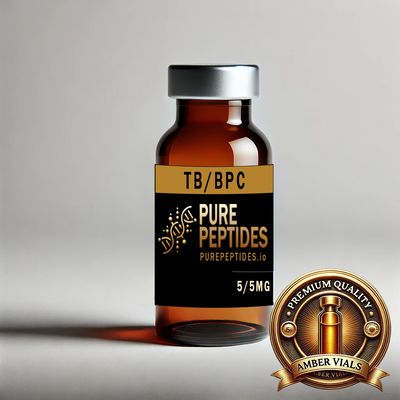Peptide Patch Store
🟣Retatrutide | 10 mg 🏆 Amber Edition

RETATRUTIDE AMBER EDITION
| Unit Size | 10 mg/vial |
| Unit Quantity | 1 Amber Vial |
| Molecular Formula | C46H56N10O9 |
| Molecular Weight | 888.01 |
| Sequence | H-Arg-D-Ala-His-D-Phe-Ser-Tyr-Gly-Pro-Lys(1)-OH |
| Appearance | White Powder |
| Peptide Purity | >98.1% |
| Solubility | Soluble in water or 1% acetic acid |
Retatitide is a synthetic peptide designed to mimic the bioactivity of naturally occurring peptides involved in metabolic regulation. It shows promise in areas such as glucose homeostasis and energy balance by acting on specific receptors in the central nervous system and peripheral tissues.
Retatitide primarily binds to GLP-1 receptors, which are G-protein-coupled receptors (GPCRs) expressed in pancreatic beta cells, the gastrointestinal tract, and areas of the brain associated with appetite regulation. Upon binding, Retatitide activates intracellular signaling pathways that drive its physiological effects.
When Retatitide binds to GLP-1 receptors, it triggers the activation of adenylate cyclase, increasing intracellular levels of cyclic adenosine monophosphate (cAMP). Elevated cAMP activates protein kinase A (PKA), which in turn enhances insulin secretion from pancreatic beta cells. This insulin release is glucose-dependent, reducing the risk of hypoglycemia, which is a common side effect of many other antidiabetic agents.
It also activates the PI3K/Akt signaling pathway. This pathway is crucial for glucose uptake and glycogen synthesis in peripheral tissues, such as skeletal muscle and adipose tissue. Activation of this pathway helps facilitate glucose transport into cells by promoting the translocation of glucose transporter type 4 (GLUT4) to the cell membrane. Additionally, it inhibits hepatic gluconeogenesis, thereby reducing blood glucose levels.
Retatitide exerts anorexigenic effects by activating GLP-1 receptors in the hypothalamus, a key brain region involved in appetite control. The cAMP/PKA pathway in the hypothalamus suppresses neuropeptide Y (NPY) and agouti-related peptide (AgRP), which are potent appetite stimulators. Simultaneously, Retatitide promotes the expression of pro-opiomelanocortin (POMC), leading to reduced food intake and increased energy expenditure.
Slows gastric emptying by acting on GLP-1 receptors in the gastrointestinal tract. This prolongs nutrient absorption and reduces postprandial blood glucose spikes. The delay in gastric emptying further contributes to its appetite-suppressing effects, as it induces a sensation of fullness.
Preclinical trials indicate that Retatitide could help improve glucose tolerance, reduce food intake, and facilitate weight loss without causing significant hypoglycemia. It is currently undergoing clinical evaluation for its potential in managing metabolic disorders.





